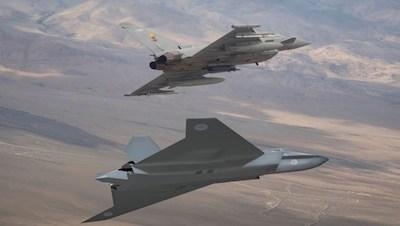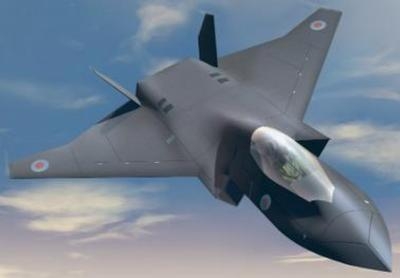Of Euro-Atlantic and Indo-Pacific Security
The United Kingdom, Japan, and Italy have entered into a partnership by which the three countries seek to develop, build, flight-test, and ultimately deploy a sixth-generation jet fighter. The initiative—which has been ascribed the prosaic, perhaps overly-broad moniker Global Combat Air Program (GCAP)—will build on work already undertaken by the BAE, Rolls Royce, Leonardo, MBDA team developing the U.K.’s Tempest combat aircraft, and the Mitsubishi, BAE, Rolls-Royce, Leonardo, MBDA team developing Japan’s F-X stealth fighter. By conjoining the two conspicuously analogous factions, the governments of the three nations have set in motion their plan to field an aircraft sporting advanced sensors, cutting-edge weapons, and innovative data systems by 2035.

Rishi Sunak—the U.K.’s fourth Prime Minister in the last six-years—visited RAF Coningsby on 09 December 2022 to launch the GCAP’s first major phase and view the base’s Typhoon fighters—which for two-decades have served as the U.K.’s primary air deterrent and stand to be replaced by the aircraft born of the Global Combat Air Program.
“The security of the United Kingdom, both today and for future generations, will always be of paramount importance to this government," Sunak declared. “That’s why we need to stay at the cutting-edge of advancements in defense technology—outpacing and out-maneuvering those who seek to do us harm. The international partnership we have announced today with Italy and Japan aims to do just that, underlining that the security of the Euro-Atlantic and Indo-Pacific regions are indivisible.”
Work to establish the nascent GCAP aircraft’s core architectures is currently underway. The program’s formal developmental phase is slated to begin in 2025. Cost-sharing agreements will be predicated upon a joint assessment of program costs and the expected monies respectively allocated to the GCAP initiative by the U.K., Japanese, and Italian governments. It is anticipated that additional countries may, in due course, pursue involvement in the Global Combat Air Program, or collaborate on broadening its capabilities.

The aircraft resultant of GCAP is expected to be broadly compatible with the extant and near-future combat aircraft of NATO member nations.
In addition to developing a core fighter, GCAP will assess the need for uncrewed air-vehicles and new weapons as part of a wider future combat air-system.
BAE Systems CEO Charles Woodburn posited: “The launch of the Global Combat Air Program firmly positions the U.K., alongside Japan and Italy, as leaders in the design, development, and production of next generation combat air capability.”
In a statement made jointly with the Japanese Ministry of Defense, the U.S. Department of Defense expressed approval of the Global Combat Air Program, setting forth: “The United States supports Japan’s security and defense cooperation with like-minded allies and partners, including with the United Kingdom and Italy—two close partners of both of our countries—on the development of its next fighter aircraft.
“The United States and Japan are bolstering our defense cooperation in a number of promising areas, particularly in advancing opportunities for joint research, development, testing, and evaluation. Together, we have begun important collaboration through a series of discussions on autonomous systems capabilities, which could complement Japan’s next fighter program among other platforms. In this context, both sides have concurred to start concrete cooperation within the next year. Such efforts between the United States and Japan greatly strengthen the U.S.-Japan Alliance and build on our cooperation with like-minded partners, further enabling joint responses to future threats in the Indo-Pacific region and beyond.”
 ANN FAQ: Contributing To Aero-TV
ANN FAQ: Contributing To Aero-TV ANN's Daily Aero-Linx (05.29.24)
ANN's Daily Aero-Linx (05.29.24) ANN's Daily Aero-Term (05.29.24): NORDO (No Radio)
ANN's Daily Aero-Term (05.29.24): NORDO (No Radio) Airborne 05.28.24: Jump Plane Down, Starship's 4th, Vision Jet Problems
Airborne 05.28.24: Jump Plane Down, Starship's 4th, Vision Jet Problems ANN's Daily Aero-Term (05.30.24): Beyond Visual Line Of Sight (BVLOS)
ANN's Daily Aero-Term (05.30.24): Beyond Visual Line Of Sight (BVLOS)




